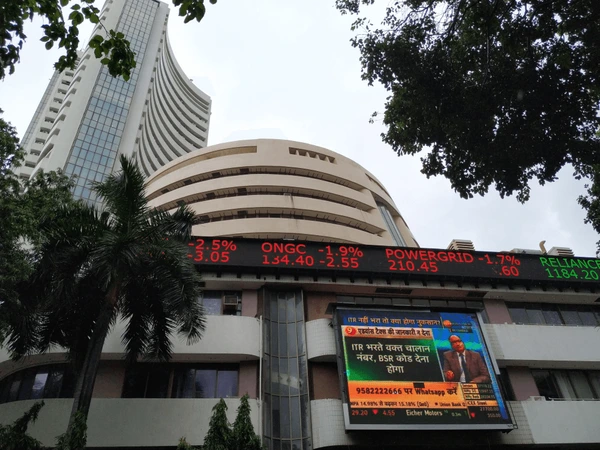Most investors concentrate on identifying the “next big stock” or forecasting market trends to profit from the stock market. However, risk management is one of the most important—yet underappreciated—aspects of successful investing. Your long-term success in the Indian stock market ultimately depends on how well you manage risk, regardless of your level of experience trading equity shares.
This post will discuss the importance of risk management in stock investing, how it safeguards your money, and the resources that all investors need to be aware of.
The Significance of Risk Management in Finance
The objective of any financial endeavor is to maintain and increase wealth over time, not only generate large returns. Like all other markets, the Indian equities market is impacted by a few variables, including interest rates, investor sentiment, global cues, political shifts, and economic cycles.
Risk always exists, but returns are never assured. During market downturns, even a portfolio of robust equities can implode without an effective risk management strategy.
🛡️ Risk management equips you to deal with risk, not remove it.
Risk Types for Investing in Indian Stocks
You must first comprehend the many kinds of equity share investing before you can effectively manage risk:
Market Risk: The possibility of suffering losses as a result of general market fluctuations.
Company-level problems such as low profits, changes in leadership, or business scandals are examples of stock-specific risk.
The inability to sell a stock without affecting its price is known as liquidity risk.
Sector Risk: Risks unique to a given industry, such as changes in regulations or fluctuations in the price of commodities.
Currency and Global Risk: Particularly important for businesses that deal with foreign markets.
Fundamentals of Risk Management
1. First and foremost, capital preservation
In investing, the first guideline is to avoid losing money. The second is to keep the first rule in mind. A methodical strategy prioritizes capital preservation in addition to profits.
2. Size of Position
It matters how much money you put into a single stock. Although it carries a considerable risk, investing half of your money in a single stock may yield significant profits.
Limiting your exposure to any one asset to 5–10% of your entire portfolio is a better strategy.
3. The process of diversification
Avoid taking on too much at once. Diversify your investments among asset classes (stocks, mutual funds, bonds) and industries (banking, pharmaceutical, FMCG, and technology).
🔄 Diversification protects against sector-specific crashes and lowers overall portfolio volatility.
4. Stop-Loss Utilization
Stop-loss orders assist in reducing your potential loss. To stop additional losses, you establish a preset price at which the stock will be automatically sold.
🧠 This enforces discipline and takes emotions out of decision-making.
5. Frequent Evaluation of Portfolios
As markets change, so should your approach. Reviewing your stock shares on a regular basis guarantee that your portfolio stays in line with your financial objectives and risk tolerance.
Tools and Techniques for Risk Management
➤ Ratio of Risk to Rewards
Prior to making any transaction or investment, weigh the risk and possible profit. Making ₹50 instead of ₹100 is ensured by a suitable risk-reward ratio, such as 1:2 or 1:3.
➤ Evaluation of Beta
The volatility of a stock in relation to the market is measured by its beta. More volatile stocks have a beta of more than 1, whereas safer stocks have a beta of less than 1. To balance risk in your portfolio, use beta.
➤Allocation of Assets
Choose the proportion of your funds that should be invested in debt, gold, equity shares, etc. This balance may change over time depending on your age, goals, and risk tolerance.
➤Practical Strategies for Hedging
Options and futures are occasionally used by seasoned investors to hedge positions. Despite their complexity, these technologies can lower downside risk if applied properly.
Aspects of Risk Management That Are Psychological
Risk management involves more than simply math; it also involves mentality. Fear, overconfidence, and emotional decisions frequently result in needless risks.
Keep your distance from specific stocks.
Recognize losses as a necessary part of the process.
Retaliation trading after a poor trade should be avoided.
Don’t pursue earnings before being aware of the risks.
🧘 An investor who is disciplined and calm is better able to manage volatility.
Examples from Real Life
During the 2020 decline, an investor who held 90% of their portfolio in small-cap stocks probably suffered enormous losses.
On the other hand, a person with stop-loss triggers and a diversified portfolio might have recovered more quickly and maintained capital.
These illustrations show how risk management in Indian stock investment can mean the difference between survival and catastrophe.
Concluding remarks
Being wise is more important than always being safe when it comes to risk management. You must use good risk management techniques to safeguard your money whether you’re investing in high-growth mid-cap stocks or blue-chip equities shares.
Disclaimer:
This article is for informational and educational purposes only and does not constitute financial advice. Investing in the stock market involves risks, and readers should do their own research or consult a qualified financial advisor before making any investment decisions. The views expressed are those of the author and may not reflect the opinions of this blog or its affiliates.




